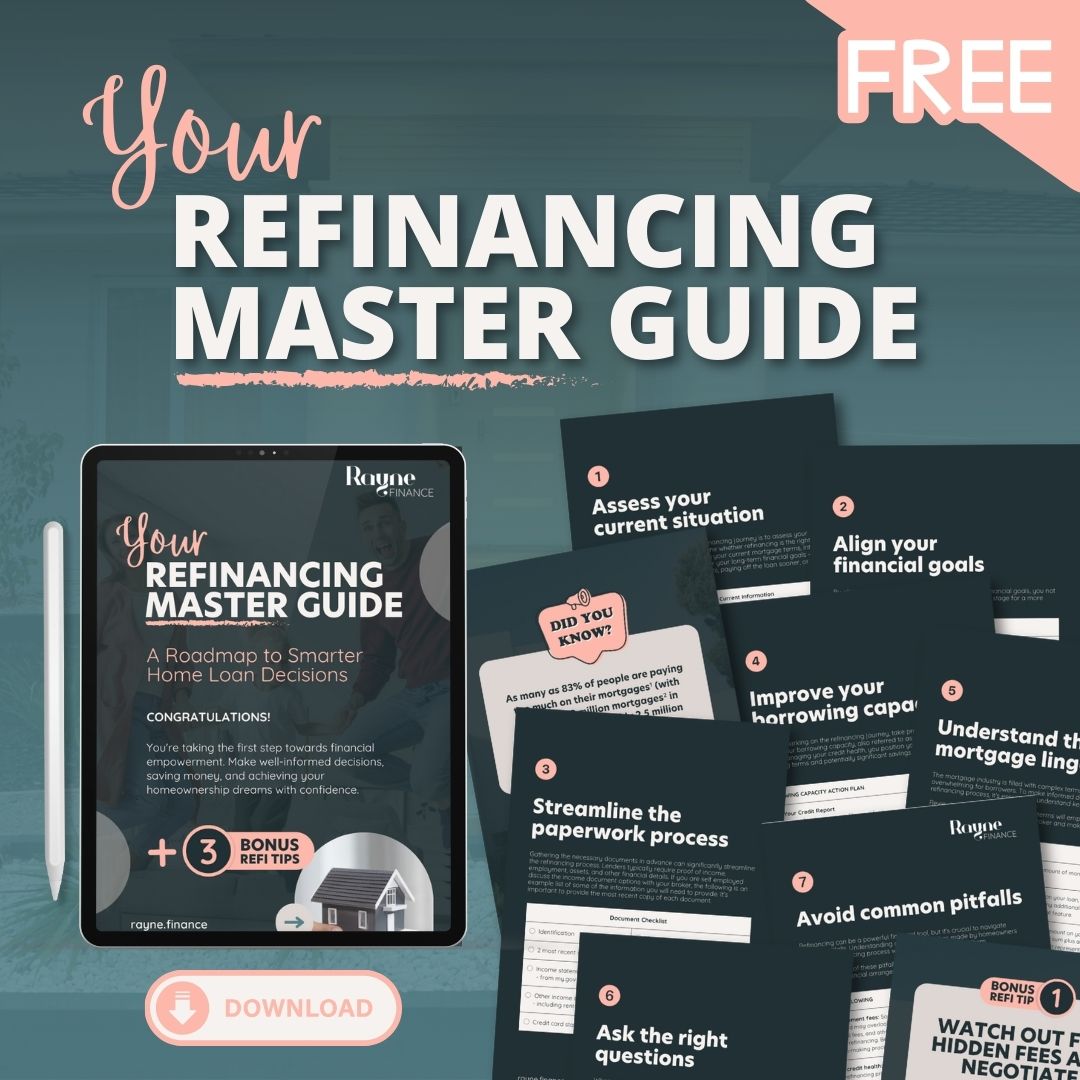Every extra dollar you pay into your loan reduces your outstanding balance, which in turn reduces the interest charged. For example, if you owe $500,000 on your mortgage and have $30,000 in redraw, you will be charged interest on only $470,000.
The redraw facility also lets you access these extra repayments if needed. For example:
Your minimum monthly repayment is $2,000, but you decide to pay $2,500 each month.
After 12 months, you will have made $6,000 in extra repayments ($500 x 12).
If your loan has a redraw facility, you can withdraw up to $6,000 when required.
Redraw vs offset account
Both redraw facilities and offset accounts reduce the ‘interest bearing’ portion of your loan, however they work differently:
Redraw facility: Extra repayments sit within your loan, reducing your loan balance and interest costs. If you withdraw these funds later, you are essentially increasing your loan balance again, which may have tax implications if the property is an investment.
Offset account: This is a separate transaction account linked to your loan. The money in this account offsets your loan balance, reducing the interest charged, but because it remains separate from your loan, withdrawals are treated as normal bank transactions rather than borrowing.
Another key difference is that redraw facilities may require approval or processing time, whereas offset accounts provide immediate access to funds.
REDRAW PROS
Reduces your interest
Extra repayments reduce your loan balance, lowering interest costs.
Encourages disciplined savings
Funds aren’t as easily accessible as an offset account, helping to prevent impulse spending.
Promotes flexibility
If needed, you can access the extra repayments rather than taking out a personal loan or using credit cards.
REDRAW CONS
Limited access to funds
Some lenders may impose restrictions, withdrawal limits or waiting periods.
Less flexible than offset
If you need frequent access to your extra repayments, an offset account may be more suitable. There may also be minimum withdrawal amounts for a redraw.
Potential fees
Some lenders may charge a fee to redraw.
What happens to the redraw when the loan is paid off?
Once your loan is fully repaid, any remaining redraw balance may no longer be accessible. Some lenders automatically apply redraw funds toward paying off the loan, while others may allow you to withdraw the remaining balance before closure.
It’s important to check your lender’s policies when deciding if a redraw is right for you.
Licensing statement: Rayne Finance ABN [70 605 100 838] is authorised under LMG Broker Services Pty Ltd Australian Credit Licence 517192. Disclaimer: (1) As with any financial scenario there are risks involved. This information provides an overview or summary only and it should not be considered a comprehensive analysis. You should, before acting in reliance upon this information, seek independent professional lending or taxation advice as appropriate and specific to your objectives, financial circumstances or needs. This publication is provided on the terms and understanding that: (2) LMG Broker Services Pty Ltd, Rayne Finance (Seed Lending Pty Ltd) and the authors, consultants and editors are not responsible for the results of any actions taken on the basis of information in this publication, nor for any error in or omission from this publication. (3) LMG Broker Services Pty Ltd, Rayne Finance (Seed Lending Pty Ltd) and the authors, consultants and editors, expressly disclaim all and any liability and responsibility to the maximum extent permitted by the law to any person, whether a purchaser or reader of this publication or not, in respect of anything, and of the consequences of anything, done or omitted to be done by any such person in reliance, whether wholly or partially, upon the whole or any part of the contents of this publication.
Explore other FAQs and Facts
50,000 new places in the Home Guarantee Scheme
From 1 July 2025, an extra 50,000 places are available in the Home Guarantee Scheme, helping eligible buyers purchase a home with a smaller deposit and avoid lenders mortgage insurance. The scheme has already supported over 160,000 Australians since 2020, with tailored guarantees for first-home buyers, regional buyers, and single parents.
How property markets are performing throughout Australia
Australia’s property market is maintaining steady momentum, with dwelling prices rising 1.7% in the first five months of 2025. Perth leads annual growth at 8.6%, followed by Adelaide and Brisbane. Nationwide, demand is outpacing supply, fuelled by interest rate cuts, strong migration, and renewed buyer confidence.
How much do you need for a home deposit?
Buying a property but don’t have the deposit in cash right away? There may be an alternative worth considering. In some situations, buyers can provide a guarantee instead of upfront funds. It’s a tool that can offer flexibility without compromising the seller’s confidence, but how does it actually work?
What are deposit bonds and how do they work?
Buying a property but don’t have the deposit in cash right away? There may be an alternative worth considering. In some situations, buyers can provide a guarantee instead of upfront funds. It’s a tool that can offer flexibility without compromising the seller’s confidence, but how does it actually work?
Understanding conditional loan approval
Thinking about buying a property? You’ve probably heard the term “conditional approval” thrown around but what does it actually mean, and how does it differ from unconditional approval? Understanding the difference can help you feel more confident, better prepared, and avoid surprises as you move through the home loan process.
How to use equity to purchase property
Equity in your home can open doors to new financial opportunities, including property investment, renovations, or debt consolidation. It’s about understanding what you’ve built up—and how to use it wisely. With the right guidance, equity can help you move forward with confidence, but it’s important to weigh the benefits and risks.
What are low-doc loans and who are they for?
Low-doc loans offer a solution for self-employed borrowers who lack traditional financial documents like payslips or tax returns. Instead, lenders assess income using BAS, bank statements, or accountant declarations. While these loans provide flexibility, they often require higher deposits and carry stricter conditions, making them best suited for specific borrower situations.
Help to Buy scheme and changes to how lenders consider student debt
More Australians could soon enter the property market with just a 2% deposit, thanks to the expanded Help to Buy scheme. Meanwhile, new lending guidance means student debt will now be treated more flexibly, helping younger buyers. These changes aim to make homeownership more accessible for low- and middle-income earners.
What the federal budget means for buying property
The 2025 federal budget introduces key measures affecting home buyers, including an expanded Help to Buy scheme, increased infrastructure investment, and incentives to grow the construction workforce. Foreign investors face new restrictions, and funding for prefabricated homes aims to accelerate supply. These changes could significantly reshape Australia’s property market.
Own your debt before it owns you
Here’s the hard truth: If you’re not in control of your debt, it’s controlling YOU.
Debt doesn’t just sit quietly in the background. It piles up, creeps into your financial freedom, and slowly starts calling the shots. It’s time to flip the script.
Find out how taking control of your debt can restore your financial freedom and bring peace of mind.














